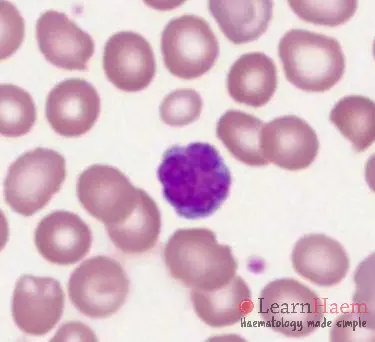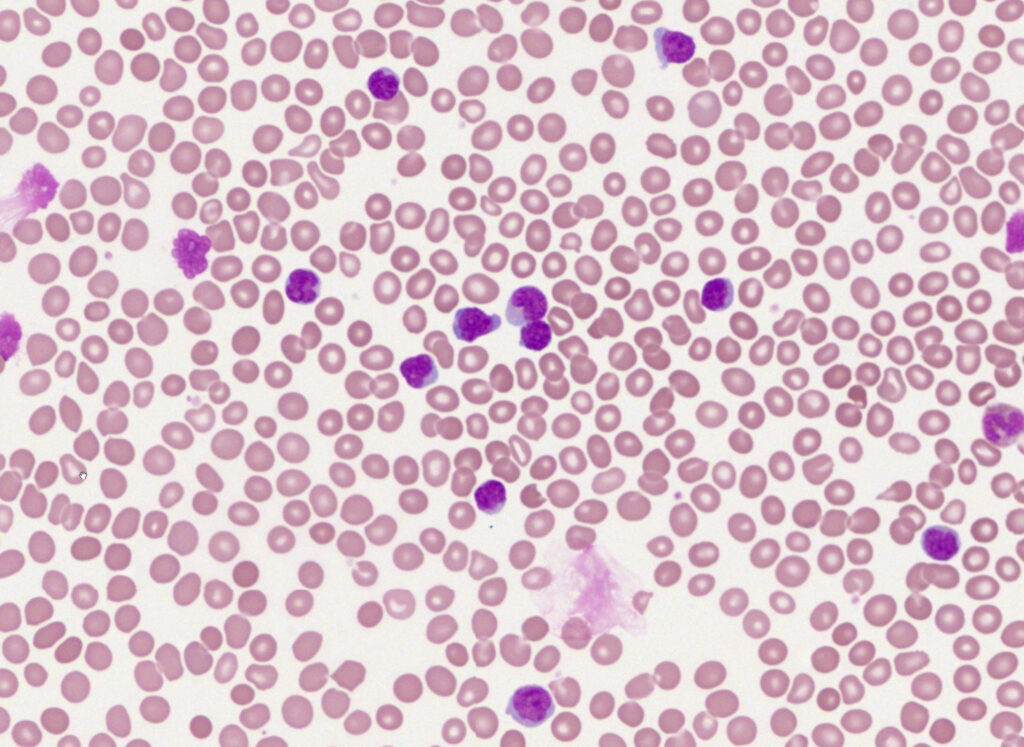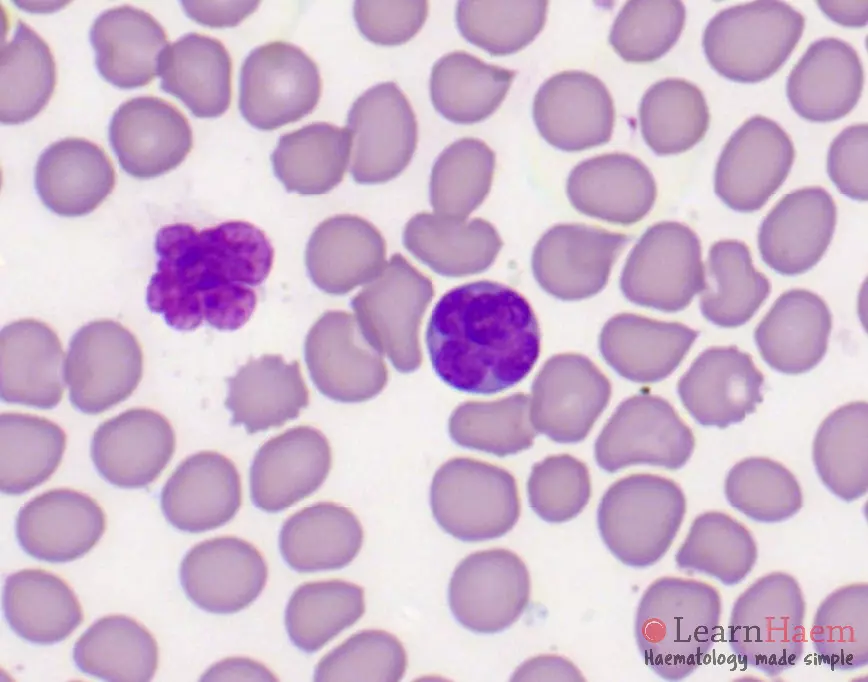Clinical features
- Develops in a minority (~2.5%) of adults who are carriers of the human T lymphotropic (HTLV-1) virus
- Geographically distributed in Japan, the Caribbean and less frequently, Taiwan and Africa
- HTLV-1 also causes tropical spastic paraparesis (HTLV-1-associated myelopathy)
- Often presents in the leukaemic phase
- Associated with lymphadenopathy, sometimes hepatosplenomegaly
- Skin infiltration (erythema, papules or nodules) and hypercalcaemia are common
- Patients may have opportunistic infections resulting from impaired T cell function
- PCP
- Strongyloidiasis
- Prognosis is generally poor
Morphological features


- May be quite pleomorphic, with several described variants:
- Pleomorphic small / medium / large
- Anaplastic
- AITL-like (rare)
- Medium-large atypical lymphoid cells
- Pronounced nuclear pleomorphism with multiple lobes – “flower cells“
- Coarsely clumped chromatin with distinct, sometimes prominent nucleoli
- Variable proportions of blast-like cells
- A minority of cells may resemble Sezary cells
- There may be concomitant eosinophilia
Toolbar
Adjustments
Brightness
Contrast
Saturation


0 x
Toolbar
Adjustments
Brightness
Contrast
Saturation


0 x
Toolbar
Adjustments
Brightness
Contrast
Saturation


0 x
Toolbar
Adjustments
Brightness
Contrast
Saturation


0 x
Toolbar
Adjustments
Brightness
Contrast
Saturation


0 x
Toolbar
Adjustments
Brightness
Contrast
Saturation


0 x
Differential diagnosis
- Sezary syndrome
- Other mature T cell lymphomas
Investigations
- Serology for HTLV-1
- Immunophenotyping: CD4+/25+


Leave A Comment